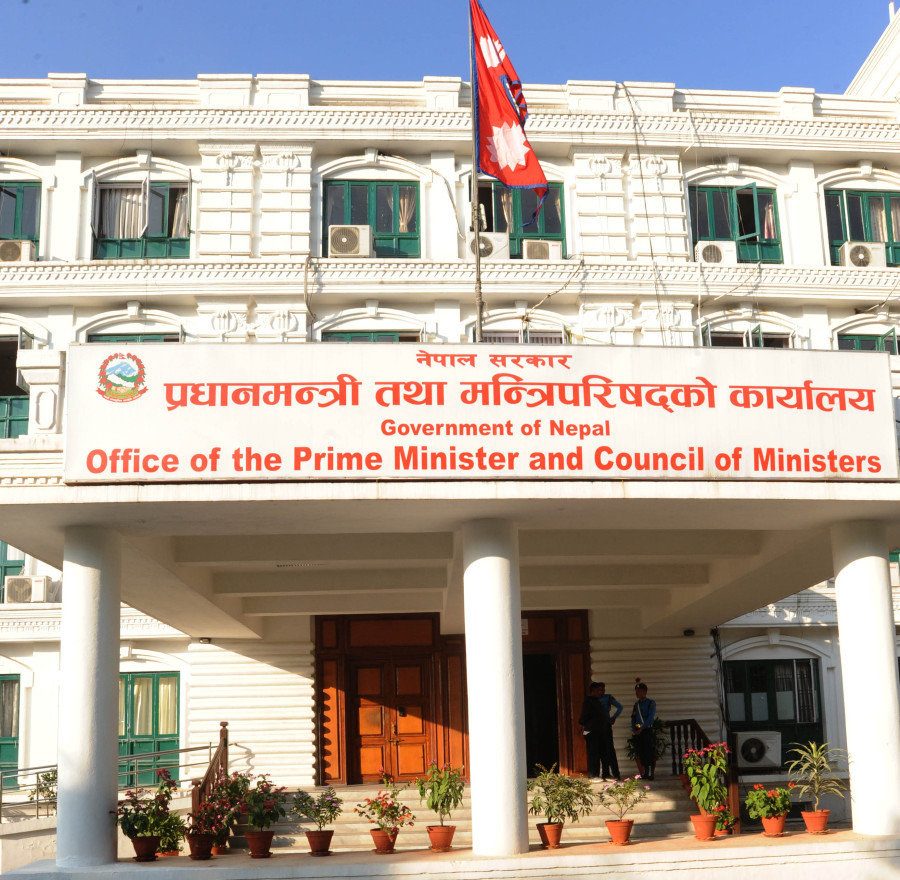Money
Cabinet okays revision of air service agreement with China
Currently, Nepali carriers are currently allowed to fly on seven destinations— Beijing, Shanghai, Guangzhou, Kunming, Chengdu, Lhasa and Xi'an.
Sangam Prasain
The government has approved the Tourism Ministry’s proposal to review the air service agreement with China.
Gokul Prasad Baskota, Minister for Communication and Information Technology and Spokesperson of government, told the weekly press briefing on Thursday that the Cabinet has given its “in principle” approval for the Tourism Ministry’s proposal to revise the air service agreement with the northern neighbour.
High-level delegation from the two countries are scheduled to meet in Beijing on July 25. The Cabinet has allowed the ministry to form a five-member team led by Tourism Ministry Joint Secretary to hold discussion. “Nepal has sought access to all Chinese airports and China has proposed to increase flight frequencies to Nepal,” said Pramod Nepal, under secretary at the Tourism Ministry.
“The Chinese side has requested to increase flight frequencies. However, we have informed them that except Kathmandu, Nepal government is ready to increase frequencies to the two new upcoming airports in Bhairahawa and Pokhara,” he said. “The frequency, however, will depend on the negotiations that will take place on July 25.”
Nepal will ask China to allow Nepali carriers to fly to different Chinese cities as the government has set a target to significantly increase Chinese arrivals during Visit Nepal campaign version 3.0 in 2020 which aims to attract 2 million foreign tourists. Nepal wants to bring in at least 500,000 Chinese tourists in 2020.
Currently, Nepali carriers are currently allowed to fly on seven destinations— Beijing, Shanghai, Guangzhou, Kunming, Chengdu, Lhasa and Xi'an.
Currently, six Chinese carriers—Air China, China Southern, China Eastern, Sichuan Airlines, Cathay Dragon and Tibet Airlines—operate flights to Nepal. The existing pact allows up to 70 flights per week. Since the agreed frequency has been consumed, Chinese carriers want the new pact to allow more flights as travel demand is constantly going up, government officials said.
No Nepali carriers are permitted to fly to China. The national flag carrier used to operate a service to Osaka, Japan via Shanghai until 2008 under fifth freedom rights.
In 2015, Nepal Airlines applied for landing permission at Guangzhou Baiyun International Airport, but its application has still not been approved.
Apart from allowing Nepal’s carrier access to different Chinese cities, the government has planned to promote upcoming Gautam Buddha International Airport in Bhairahawa. The country’s second international airport is expected to begin operation by early 2020.
Tourism Ministry officials said that the Nepal side would also discuss the possibility of allowing Nepali airlines to conduct Manasarovar tours or aerial circumnavigation of Manasarovar in China by helicopter or fixed-wing aircraft.
They said that the proposed aerial tour could attract a large number of pilgrims who have money but no time or inclination to trek over the treacherous route. Mt Kailash and Lake Manasarovar are a big draw for the Hindu and Buddhist devout.
Nepal and China signed a revised bilateral air services agreement in February 2014, permitting the operation of 56 flights per week with any type of aircraft on a reciprocal basis.
The pact allowed each country to increase the flight frequency to 70 per week by 2016. Under the old agreement, Chinese airlines were allowed to operate 14 flights per week.
According to the Department of Immigration, China retained the top spot as Nepal’s tourism source market in the first four months of 2019, sending 20.64 percent more tourists year-on-year. Nepal received 64,578 Chinese tourists during the period January-April, according to the statistics of the Department of Immigration.
Arrivals from China saw the strongest growth of 46.8 percent to 153,602 individuals in 2018, largely due to increased flight frequencies between the two countries.




 17.12°C Kathmandu
17.12°C Kathmandu














